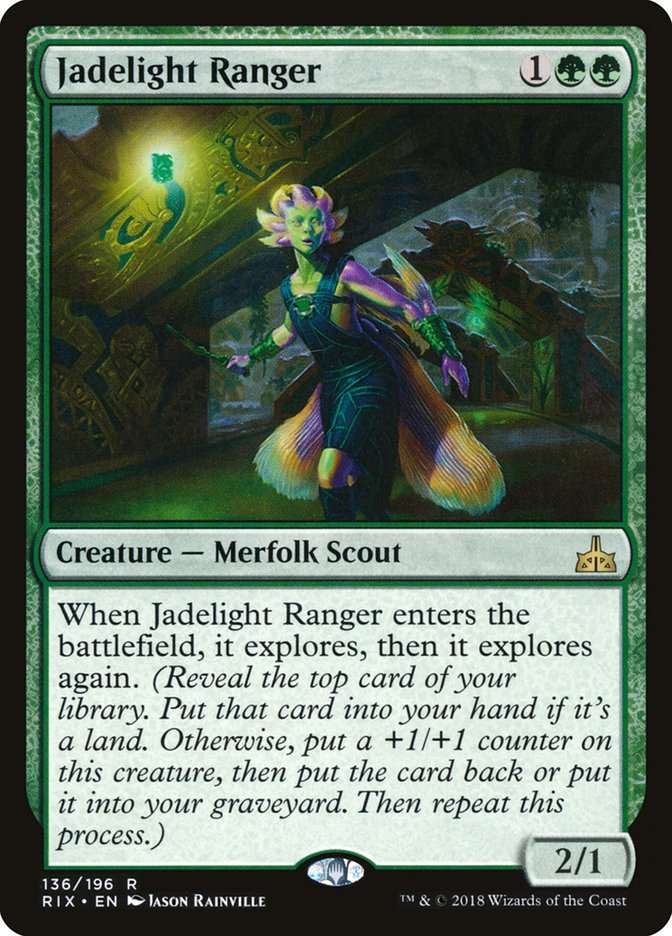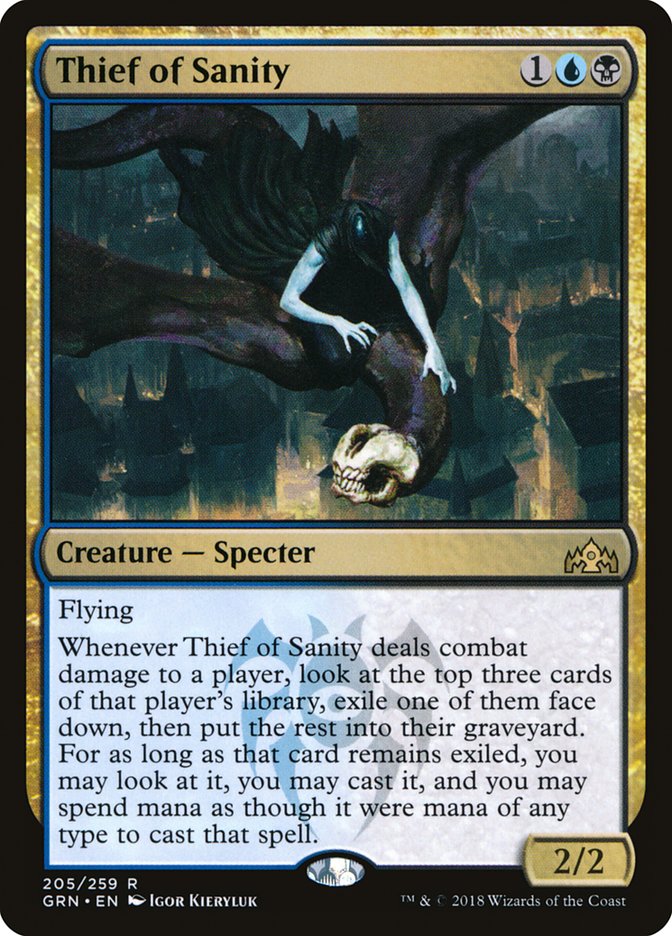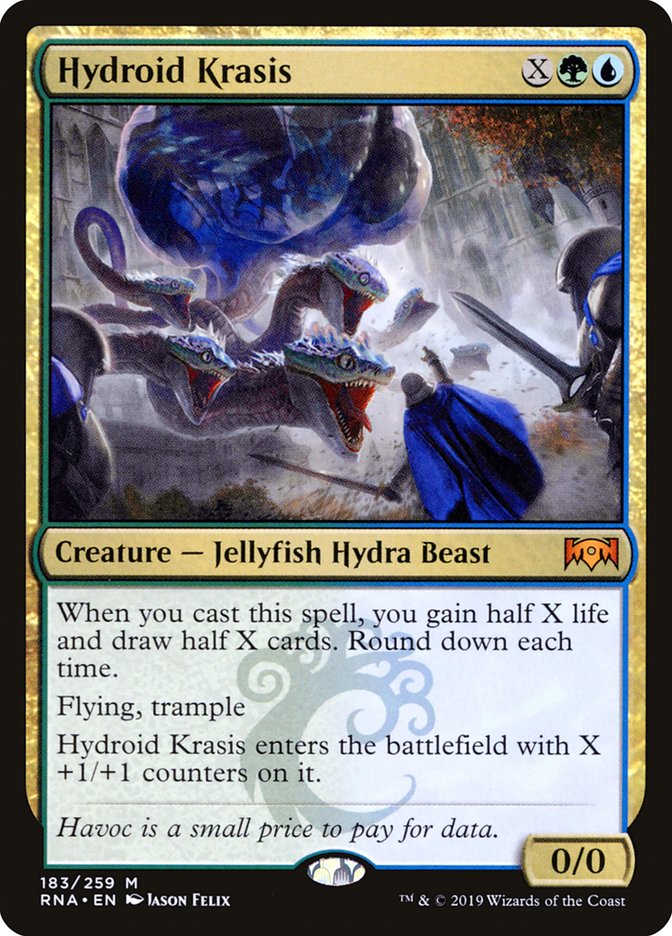I’m back home after a long weekend in Cleveland, and that means it’s time for reflection. When we last met, I had what I thought was a pretty firm grasp on how the Standard metagame was going to shake out for the first Mythic Championship, and it’s time to see how I did. I’ll be going through the decks I wrote about last weekend in the same format, and evaluate my predictions for the metagame compared to how things played out in reality.
For reference, here are the links to all the decks that finished 8-2 or better in the Standard portion of the tournament, as well as those that finished 7-3 or better. Remember that, for a split-format tournament, it’s important to look past the Top 8 to see which decks were performing well over the largest sample and which were carried into the limelight by players with strong Limited records.
The Contenders
With Autumn Burchett’s victory along with two other copies in the Top 8, Mono-Blue Aggro became the deck of the tournament. And if you look deeper, the deck looks just as strong. Yes, it was the only one of the top five most played archetypes to post a below-average Day 2 conversion rate, but that metric is poor, since Draft comprises nearly half of the Day 1 rounds. Thanks to reddit user u/bokchoykn we have a breakdown of the conversion rate of major archetypes to a 7-3 or better record in Standard.
By this data set, Mono-Blue Aggro looks like one of the best-performing archetypes in the tournament, which makes sense if it was powerful enough to sway diehard midrange players like Reid Duke and Brad Nelson away from Sultai Midrange.
Creatures (17)
Spells (43)
- 19 Island
- 4 Opt
- 1 Negate
- 3 Spell Pierce
- 1 Entrancing Melody
- 1 Chart a Course
- 4 Dive Down
- 4 Curious Obsession
- 4 Wizard's Retort
- 2 Essence Capture
Sideboard

However, despite being a known quantity, it was only the fourth-most-played archetype in the tournament, certainly lower than I expected. I think this is due to the deck’s steep learning curve. Yes, there are some games where a Turn 2 Curious Obsession goes unanswered and runs away with the game, but when you actually have to play Magic with Mist-Cloaked Herald in your deck, the margin for error is slim. The deck could easily scare players away who didn’t have the time or wherewithal to properly learn the deck’s intricacies, suppressing its raw numbers.
It’s no surprise then to see Autumn Burchett, who has put in countless hours with the deck, deftly navigating the Top 8 with a slate of games that any player would be incredibly proud of on their way to the trophy. This isn’t just a flash in the pan deck. It’s a top contender in Standard and will continue to be, so put in the time to learn it and reap the rewards.
As for my other pick from last week for contender, Sultai Midrange, it was a rough weekend for the Hydroid Krasis aficionados. It was the most-played archetype in the field at 21.5%, right around where I expected, and converted to Day 2 and 7-3 or better at average rates. That mediocre performance could’ve been overshadowed by one or two standout performances, but there were no copies of Jadelight Ranger to be found on the Sunday stage.
As the most popular deck, it’s harder for Sultai Midrange to put up outstanding rate numbers, but popularity also makes it more likely to have an outlier or two at the top of the standings. I still expect Sultai Midrange to be among the most popular decks moving forward, but its status as the default best deck in the metagame is now murky at best. I was worried that Mono-Blue Aggro being in the limelight in recent weeks would cause players to overreact with their sideboards and suppress it, but Kraul Harpooner and Atzocan Archer were not enough to keep Island Tribal down, and it seems like most everyone has figured out how to handle the explore-based midrange deck that has been around for six months now, even if they haven’t figured out how to beat Ari Lax specifically.
I’m calling this one a win, since both decks showed out and will continue to be major players in the metagame moving forward.
The Overrated
This one was a big whiff. Esper Control was among the least popular of the top decks, but it certainly performed. Not only was it within a whisper of the trophy in the hands of Yoshihiko Ikawa, it had the best conversion rate to 7-3 or better at 26.7%, nearly tripling its presence in the metagame at the start of the tournament.
Planeswalkers (5)
Lands (25)
Spells (30)

Going in, I had assumed that a Standard metagame that contains powerful midrange decks; aggressive decks of many different flavors, one with counterspells to protect its threats and gain tempo, one with a very low curve of swarming creatures, and one with a pile of burn spells; and a non-interactive combo deck of sorts would be a nightmare for purely reactive control decks, especially because Nexus of Fate and Mono-Blue Aggro encourage other decks to load up on discard and counterspells in their sideboard.
However, that same reliance on spell-based disruption makes the sideboard copies of Thief of Sanity out of Esper Control all the more powerful. Every deck has to play the sideboard dance of how many removal spells to leave in so as to consistently answer a three-mana creature that takes over the game with one or two attacks, knowing that if they draw too many of them they won’t have the necessary pressure to beat Teferi, Hero of Dominaria and Azcanta, the Sunken Ruin.
There’s been a lot of work trying to put Thief of Sanity into a different shell where it can play a larger role, but I think the card is perfectly suited for its current job. The body isn’t exactly resilient to removal, so putting it into a midrange deck is asking it to die. Esper Control is perfectly fine trading resources in the early game, even an even exchange, but midrange decks are less happy to do so. Merfolk Branchwalker and Jadelight Ranger provide immediate value before trading with a removal spell or another creature, but Thief of Sanity is really only a headache in combat for Mono-Blue Aggro.
I understand the inclination to take cards that perform well and try to utilize them more, but context is everything in Magic, and a significant part of why Thief of Sanity performs so well is the fact that it’s in a deck against which removal is often a liability. By that same reasoning, it becomes a much worse card in Game 1s when players already have some amount of removal. Let’s not promote the card to its level of incompetence and simply appreciate it for what it is, which is a premier sideboard card in a deck that I’m ready to add to the list of contenders in Standard.
As far as I’m concerned, it’s a three-horse race now.
The Pretenders
I was rather harsh in my criticisms of Izzet Drakes and Mono-Red Aggro, particularly the latter, and I’m happy to say that both decks lived up to my low expectations of them. Their conversion rates were both poor, with a single Izzet Drakes player and two Red Aggro decks among the 7-3 or better decks.
Notably, both of the Red Aggro decks featured a green splash for Colossus and Cindervines in the sideboard:
Creatures (19)
- 4 Fanatical Firebrand
- 4 Ghitu Lavarunner
- 3 Goblin Chainwhirler
- 4 Viashino Pyromancer
- 4 Runaway Steam-Kin
Lands (8)
Spells (33)
Sideboard

For a detailed breakdown of this deck, be sure to check out Alex’s article later this week, but for now I’ll say that I like the shift away from the heavy burn package with cards like Skewer the Critics and Risk Factor and back towards more creatures with maindeck Goblin Chainwhirler and Fanatical Firebrand. These creatures are incredibly important against Mono-Blue Aggro and allow you to more consistently pressure Esper Control and Nexus decks, letting your burn spells finish the job rather than do the heavy lifting, which leaves you vulnerable to the myriad lifegain cards littered throughout the metagame.
The power of Experimental Frenzy is also a critical part of the deck, so even if it’s easier to answer, the games where it goes unanswered are frequent enough to make it a necessary inclusion. I’m still no fan of red cards moving forward, but this list strikes me as a step toward salvaging the deck as a second-tier option in the latter weeks of the format.
As for Izzet Drakes, I still don’t see what this deck is doing that’s better than Mono-Blue Aggro, besides being favored when the two decks match up against each other. The latter would have to become wildly popular before I consider adding a color and downgrading Tempest Djinn in order to gain some lackluster removal spells. I’d be more interested in working on Izzet Phoenix, given how often Goblin Electromancer will live in a format that is much lower on Shock than the one we saw last fall.
Two for three so far: looking good.
The Wildcards
Both Simic Nexus and White Aggro posted around average numbers, and both managed to place one copy in the Top 8. There’s nothing spectacular going on here, but both decks can certainly manage to take a tournament down, especially in an unprepared field.
Creatures (26)
- 2 Adanto Vanguard
- 4 Skymarcher Aspirant
- 4 Snubhorn Sentry
- 4 Benalish Marshal
- 4 Dauntless Bodyguard
- 4 Venerated Loxodon
- 4 Tithe Taker
Planeswalkers (1)
Lands (8)
Spells (25)

With the White Aggro decks, I’m afraid the additions of Tithe Taker over Adanto Vanguard as the primary two-drop and Unbreakable Formation over Pride of Conquerors as the stalemate breaker are fairly small, while the rest of the format got more significant upgrades like Kaya’s Wrath, Hydroid Krasis, and Pteramander. If you’re standing still in Magic, you’re falling behind, and that’s what has happened to History of Benalia and friends.
For Nexus of Fate, i’m not confident that it will take an upgrade from a later set in order to find the shell that puts the card or Wilderness Reclamation over the top. This is certainly for the best, since the deck’s play pattern is so horrendous that having it take over the format would easily lead to a ban. Instead we have a good deck that adds a new dimension to the metagame, which is a nice change of pace for a format that is typically dominated by the traditional aggro, midrange, and control archetypes.
Creatures (2)
Lands (14)
Spells (44)

I’d put both of these decks solidly into Tier 2, behind Sultai, Mono-Blue, and Esper, but ahead of the rest of the riff-raff of the format. You should respect them, but if you have the time and inclination to switch to one of the top three archetypes, I think you’d be wise to do so. These are also the two decks I’d have in the front of my mind when preview season starts up again, since one key addition could put them on top of the format.
The Rest
After Grand Prix Memphis, it looked like Red Midrange decks like Gruul and Rakdos could enter the format as a new contender, but both failed to follow-up their performances with small metagame share and mediocre conversion rates across the board – there was only one copy of Gruul Midrange and one of Rakdos Midrange within the 7-3 or better lists.
Selesnya Tokens, the surprise winner of last week’s Twitch Rivals event, failed to put a single player in the top-performing lists. If you’re looking for your flash in the pan decks, here they are. Turns out building a midrange deck without Hydroid Krasis is…let’s say, inadvisable. Sometimes Magic is easy but the people make it hard.
With all of these decks forming a relatively small portion of the metagame, the data set itself is error-prone, but on paper these decks all fall short. Relative to Sultai Midrange they lack the card advantage, the great sideboard tools against control and Nexus of Fate, the early-game consistency provided by the explore creatures, and the baked-in lifegain from Wildgrowth Walker and Vraska’s Contempt.
I think all of these decks are meant to be foils to Mono-Blue Aggro, but that deck is not prevalent enough to prop up a foil as a key player in the metagame and also powerful enough to not have matchups that are too lopsided.
I’m counting this one as a win too, since I didn’t see these new decks being strong enough contenders for the Mythic Championship to break them down in depth. Overall I’d say a successful set of predictions for the tournament, though it wasn’t reflected in my 6-4 Standard record with Mono-Blue Aggro.
If I had one shortcoming, it wasn’t simply locking in my deck choice earlier and getting more reps in, since as a format takes shape, everyone is largely aware of what the known decks are doing and you must execute at a high level to gain a significant edge. Moving forward, that effect will only be magnified.
We’re entering the end stage of this Standard format, and the players are well-established. Sultai Midrange, Mono-Blue Aggro, and Esper Control are the top dogs, with Nexus of Fate and White Aggro decks trailing close behind. You’ll need a good reason to deviate from these proven performers in the next few weeks; the metagame narrows now, as the proven contenders are tuned well enough to push out the fringe options. Success in late-season Standard comes from knowing your deck inside and out and finding innovative sideboard strategies that can take your opponents, many of whom are playing robotically from their prior experience, by surprise.
It’s not the most exciting seeing the same decks keep popping up, but as Autumn’s Sunday run showed, there are few things in Magic more satisfying than watching a master wield their deck with pinpoint precision.




